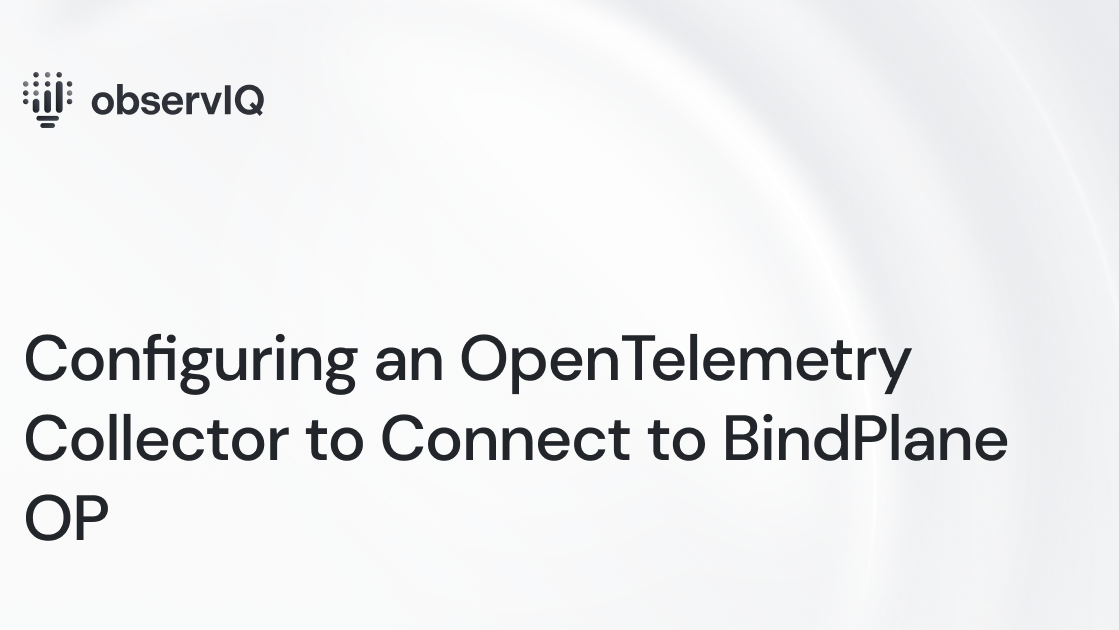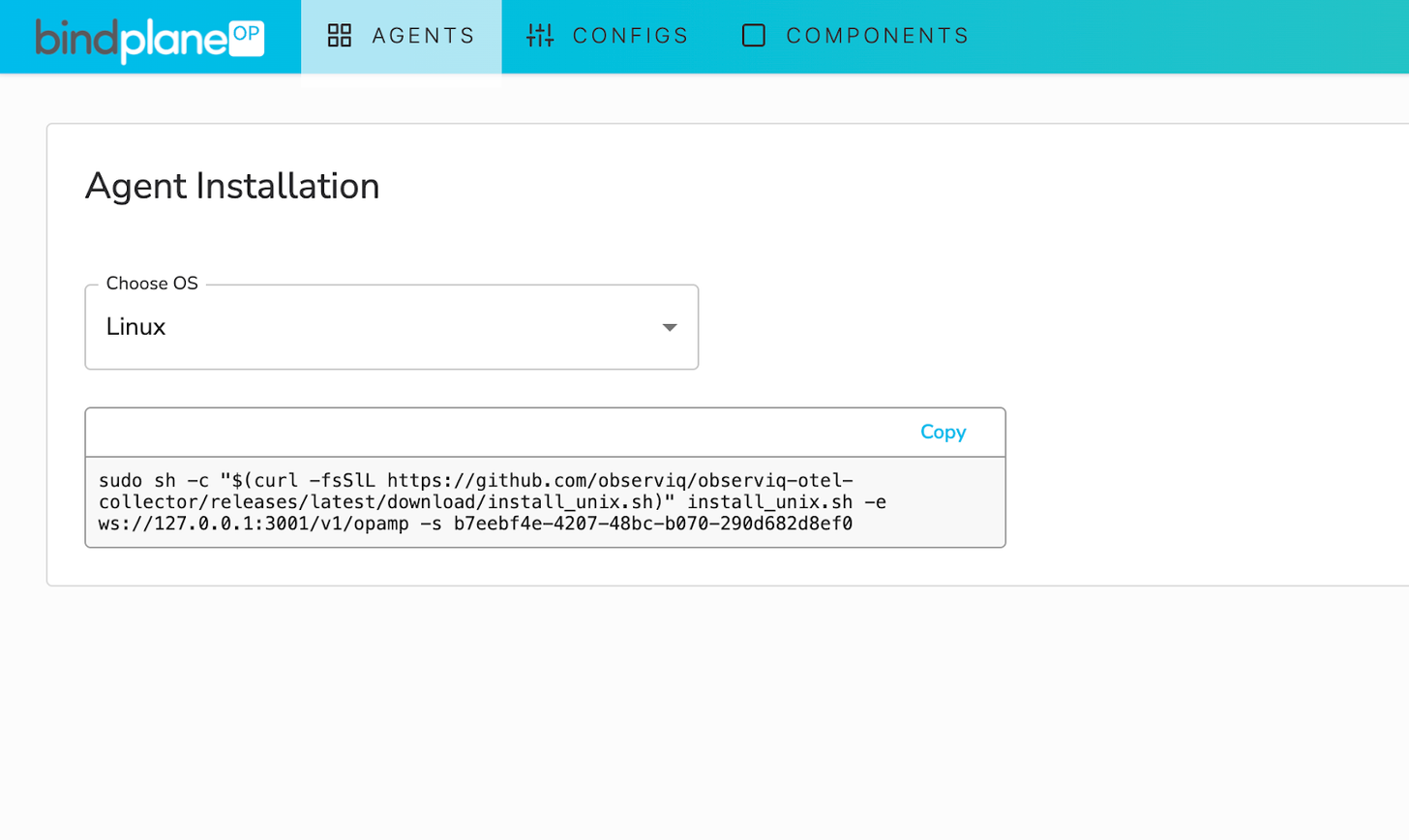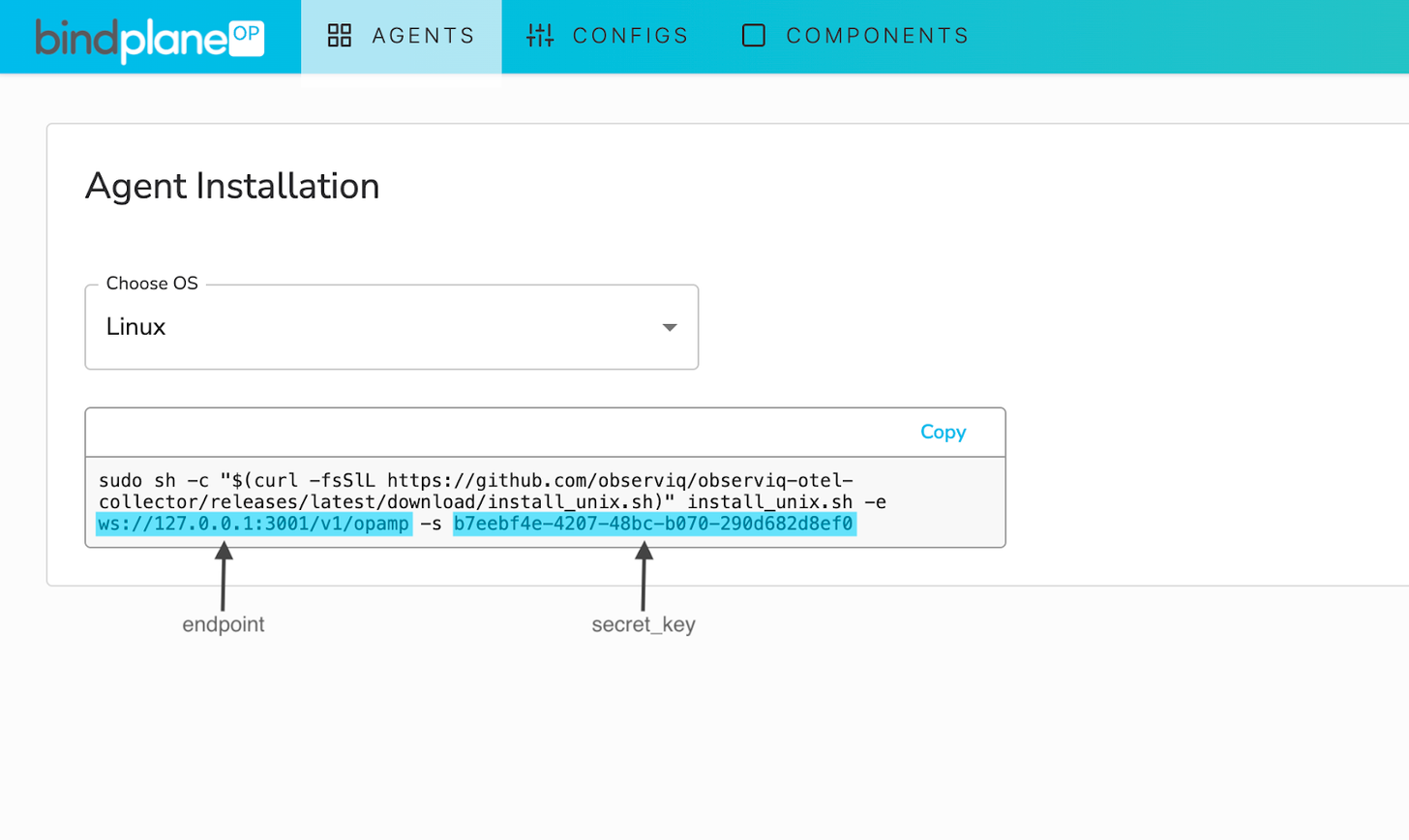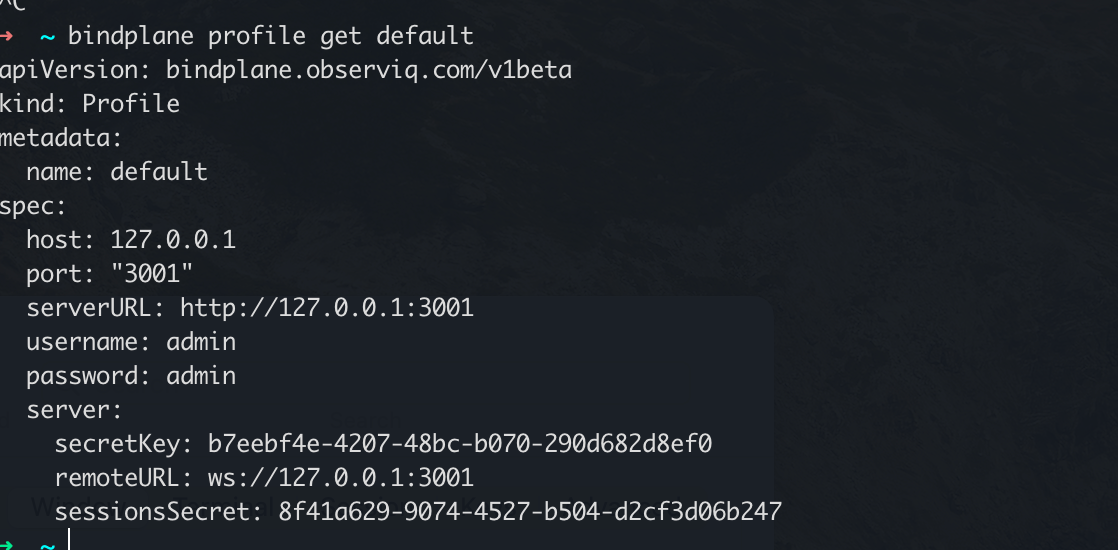Configuring an OpenTelemetry Collector to Connect to BindPlane OP

Bindplane OP is the first open-source, vendor-agnostic, agent, and pipeline management tool. It makes it easy to deploy, configure, and manage agents on thousands of sources and ship metrics, logs, and traces to any destination. This blog shows you how to configure an existing OpenTelemetry Collector from any source to connect to Bindplane OP without needing to remove or reinstall the collector.
BindPlane OP makes installing and managing the observIQ Distro of the OpenTelemetry Collector easy, automatically configuring it to connect to the BindPlane OP server instantly.
This is done on the Agents page using the one-line installer script below. If you’re installing new agents, you should use this script, as it’s the easiest way to get going.

However, you may already have a collector installed and want to configure it to connect to BindPlane OP. There are two ways to do this.
If you’re okay with updating your collector, you can run the one-line installer from BindPlane OP on top of your existing installation. This will update your collector and connect it to BindPlane OP.
However, if you need to maintain a specific version of the collector, you can follow the steps below to connect it manually.
Related Content: Turning Logs into Metrics with OpenTelemetry and BindPlane OP
Here’s what you’ll need to do:
- Navigate to your collector home
- Linux: cd /opt/observiq-otel-collector
- Windows: “C:\Program Files\observIQ OpenTelemetry Collector”
2. Create a new file called “manager.yaml” and update it to include the following three values:
1endpoint:
2# The endpoint of the BindPlane OP server you want to connect the collector to
3
4secret_key:
5# The secret_key used by BindPlane OP
6
7agent_id:
8# A randomly generated UUIDThe endpoint and secret_key can be found by looking at the one-line installer on the agent installation page, as shown below. You can generate a UUID for agent_id on linux using the command “uuidgen”.

You can also see the server details in your BindPlane OP profile. The following command will show the default.
1bindplane profile get default
Your finished manager.yaml should look like this:
1endpoint: "ws://127.0.0.1:3001/v1/opamp"
2secret_key: "b7eebf4e-4207-48bc-b070-290d682d8ef0"
3agent_id: "46de8e12-c735-4042-97db-ceca6f2fb911Save the manager.yaml and restart the collector.
You will now see the collector connected in BindPlane OP.
For more game-changing open-source observability tech tips, tools, and knowledge, follow observIQ on Twitter, LinkedIn, and stay tuned to the observIq observability blog.



